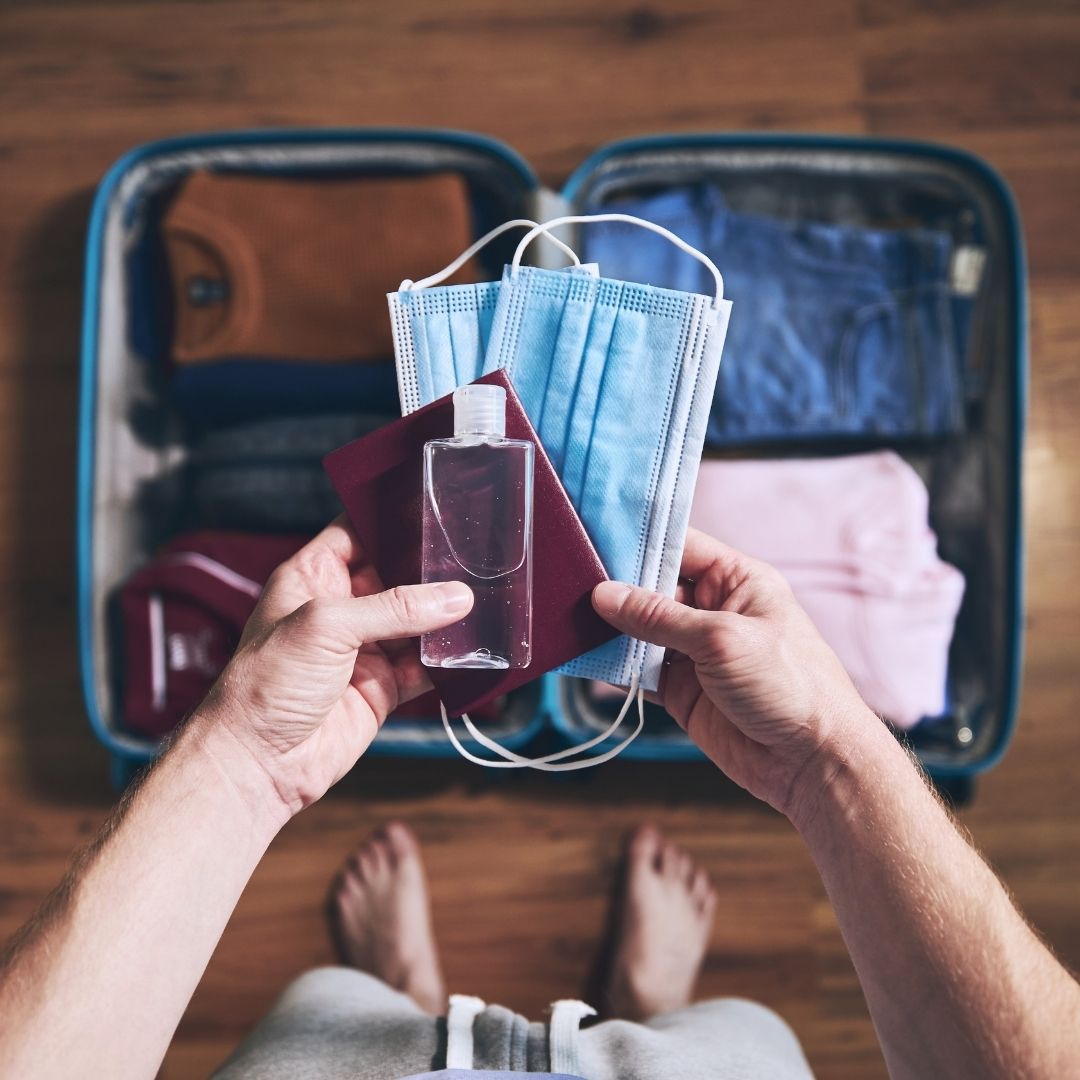INDEX
The moment you book a one-way ticket for a long trip is electric. But then, a different feeling sets in.
It’s the quiet realization that your home needs as much planning as your itinerary.
I’ve felt this before each of my long-term travels, from my six-month stint in Southeast Asia to my extended exploration of South America. The process of preparing house for long trip can feel huge, but it’s about breaking it down into manageable steps.
My Proven Checklist for Preparing House for Long Trip

I’ve refined this checklist over 52 countries. It’s a practical framework that covers everything from digital automation to physical security. Following these seven steps will help you handle the logistics efficiently, letting you focus on the adventure ahead.
Step 1: Build Your “Digital Fortress” for Bills and Mail

The biggest source of stress from afar is money and mail. Solving this first is a game-changer. My approach is to make my physical presence totally unnecessary for managing my finances. This is my top tip for managing bills while traveling long term.
I automate everything possible. Setting up auto-pay for recurring bills like mortgages, insurance, and streaming services is the baseline. For mail, a digital mailbox service is non-negotiable for me. They scan your mail, and you decide what to do with it from an app.
- Bill Pay: Your bank’s native “Bill Pay” service is often the best for scheduling payments.
- Budgeting App: A service like Mint or YNAB helps you track spending from anywhere in the world.
- Travel Credit Card: Use a card with no foreign transaction fees. I always notify my banks of my travel plans online.
- Digital Mailboxes: Anytime Mailbox gives you a real street address and an app to manage mail.
- USPS Hold/Forward: For shorter trips, the official USPS Hold Mail service is a simple, free option.
Step 2: Home Security & The Art of Looking Occupied

An empty house is a target. The goal is to create the illusion of activity. This is how to make house look occupied while away without hiring a full-time house-sitter. A mix of technology and human help is my preferred method.
I rely on smart plugs for lamps, a trusted neighbor to grab packages, and a video doorbell for monitoring. These small things create a powerful deterrent.
Smart plugs for lamps are your best friend, set them on random schedules.
A video doorbell like Ring or Nest shows you who’s at your door.
Costs are low, maybe $50-$150 for a solid starter setup.
It gives you peace of mind you can check in on from your phone.
Find one neighbor you trust completely, give them a key for emergencies.
Ask them to collect packages and clear flyers from your porch.
A small gift card or souvenir from your trip is a nice thank you.
This human touch is something technology can’t replace.
💡Pro Tip: The Pre-Departure Photo Shoot
Before you lock the door for the last time, walk through every room and take photos. This creates a clear record of your home’s condition and the contents.
It’s invaluable if you need to make an insurance claim later.
Step 3: The Big Clean and Perishables Purge

Coming home to a clean space is a gift to your future self. Coming home to a moldy fridge is a nightmare. This part of my checklist for leaving home for sabbatical is about preventing unpleasant surprises.
I start clearing out my fridge and pantry two weeks before I leave. I donate non-perishables and try to cook with everything that’s left. A deep clean of the kitchen and bathrooms is mandatory to prevent pests and mold.
My Pre-Trip Cleaning Checklist:
- 1Empty, defrost, and clean the refrigerator and freezer. Prop doors open.
- 2Run the dishwasher one last time and leave it open to air dry.
- 3Take out all trash, recycling, and compost.
- 1Wash all bedding and towels to prevent mildew.
- 2Unplug all non-essential electronics to prevent phantom power draw.
- 3Cover furniture with old sheets to protect from dust.
Step 4: Utilities and Appliances Hibernation Plan

Deciding what to do with utilities can be tricky. A full shutdown saves money but can introduce risks, especially in cold climates.
I weigh the pros and cons based on the season and trip duration. For trips over three months, I often suspend services like cable and internet to save money. For gas and electricity, my choice depends on the weather.
- Maximum savings on your monthly utility bills.
- Reduces risk of leaks or electrical faults from unattended appliances.
- Best for very long trips (6+ months) in temperate climates.
- Prevents pipes from freezing in cold winters (set thermostat to ~13°C/55°F).
- Keeps security systems and smart devices powered on.
- Avoids potential reconnection fees from utility companies.
⚠️Winter Travel Advisory
If you’re traveling in the winter, never shut off your heat completely. The cost of a burst pipe is far greater than a few months of heating bills.
I learned this the hard way after a friend’s pipes froze during a ski trip. Set the thermostat low, but keep it on.
Step 5: Vehicle Storage and Insurance

If you own a car, you need a plan. Leaving a car unused for months can damage the battery, tires, and fluids. The right choice depends on your budget and how long you’ll be away. Answering what to do before leaving for 6 months definitely includes your vehicle.
Costs about $50-$200 per month, very secure.
Climate-controlled options protect your car from extreme temperatures.
You can reduce your car insurance to a “storage” or “comprehensive-only” policy.
It’s a great hands-off option if you can afford it.
This is often free, which is a big plus!
Ask them to start the car once every two weeks to keep the battery charged.
Make sure you have a clear agreement about usage and liability.
Be a good friend and leave them a full tank of gas as a thank you.
Step 6: Inform Key People and Institutions
:max_bytes(150000):strip_icc()/tal-passport-wallets-test-baphity-genuine-leather-holder-elise-wang-001-cf430e0220cc43ae89318d762ecf1ab0.jpeg)
A few key phone calls or online updates can prevent major headaches. This includes your bank, your job (if on sabbatical), and your emergency contacts. A clear line of communication is vital.
I create a master document with my itinerary, contact information, and copies of my passport, and share it with one or two trusted people.
-
Banks & Credit Card Companies
File a travel notice online for every card you plan to use. This prevents them from flagging your foreign transactions as fraud.
-
Doctor & Insurance Providers
Get prescription refills to cover your trip. Confirm your health insurance coverage abroad or buy a dedicated travel policy.
Step 7: The “Go-Bag” and Final Walkthrough
This is it. The last day. I keep a dedicated “go-bag” with my passport, visas, first-night hotel confirmation, and essential documents. This bag never leaves my sight.
My final action is a slow, methodical walkthrough of the entire house. I use a mental checklist to confirm every window is locked, every faucet is off, and every unplugged appliance is safe. This final check is a ritual that helps silence any last-minute anxieties about preparing house for long trip.
- Final Check: Windows & DoorsAll points of entry locked. CONFIRMED. Double-check the back door.
- Final Check: AppliancesNon-essentials unplugged. CONFIRMED. Especially small kitchen gadgets.
- Final Check: TrashAll bins are empty. CONFIRMED. No welcome party for pests.
What to Do Before Leaving for 6 Months: A Quick Reference

If you’re short on time, focus on the big four: automating finances, securing the property, managing perishables, and arranging for your car. These areas cause the most problems if neglected.
🌍The 6-Month Sabbatical Power Plan
For a trip of this length, your priorities are automation and prevention. Set up a digital mail service, install smart timers for lights, give a spare key to a trusted neighbor, and arrange for proper vehicle storage with reduced insurance. Handling these four things will solve 90% of potential issues.
FAQs: Your Questions on Preparing for a Long Trip

How far in advance should I start preparing my house?
I recommend starting the process at least one month out. Begin with digital tasks like setting up autopay and mail forwarding. Save the physical tasks like cleaning and packing for the final two weeks.
Should I rent out my house while I’m away?
This is a personal choice. Renting can provide income but also adds complexity, like finding tenants and managing a property from afar. If you do, consider hiring a property management company to handle the details.
What’s the most overlooked task when preparing a home for long-term travel?
In my experience, it’s clearing the plumbing. Run water with baking soda and vinegar down all drains, especially the garbage disposal, to prevent odors. Also, pour a bit of water into seldom-used drains (like a guest bathroom) to keep the P-trap from drying out, which can let sewer gas in.
Is a digital mailbox service worth the cost for a long trip?
For trips over a month, I find it essential. It prevents important documents from being lost or returned and gives you digital access to time-sensitive mail like tax forms or jury summons. The peace of mind it provides is well worth the monthly fee.
Should I turn off the main water supply to my house before leaving?
Yes, this is one of my non-negotiable safety steps. Turning off the main water supply is the best way to prevent catastrophic damage from a potential leak or burst pipe. Just remember to drain the pipes by opening the lowest faucet in the house after the main is off.
Do I need to inform my home insurance provider about my extended absence?
Absolutely. Many insurance policies have a clause regarding how long a home can be left vacant (often 30 days) before coverage is affected. Informing them ensures your policy remains valid, and they may have specific requirements you need to follow.
Besides starting it, what else should be done to a car before long-term storage?
I recommend filling the gas tank to prevent moisture buildup, overinflating the tires slightly to avoid flat spots, and giving it a thorough cleaning inside and out to prevent pests and rust. A battery tender is also a great alternative to having someone start it.
What’s the best way to care for houseplants during a long trip?
For shorter trips, self-watering globes can work. For a sabbatical, the best options are to either ask your trusted neighbor to water them weekly or to move hardier plants away from direct sunlight and give them a deep watering right before you leave. For very precious plants, arranging for a friend to “plant-sit” is the safest bet.
